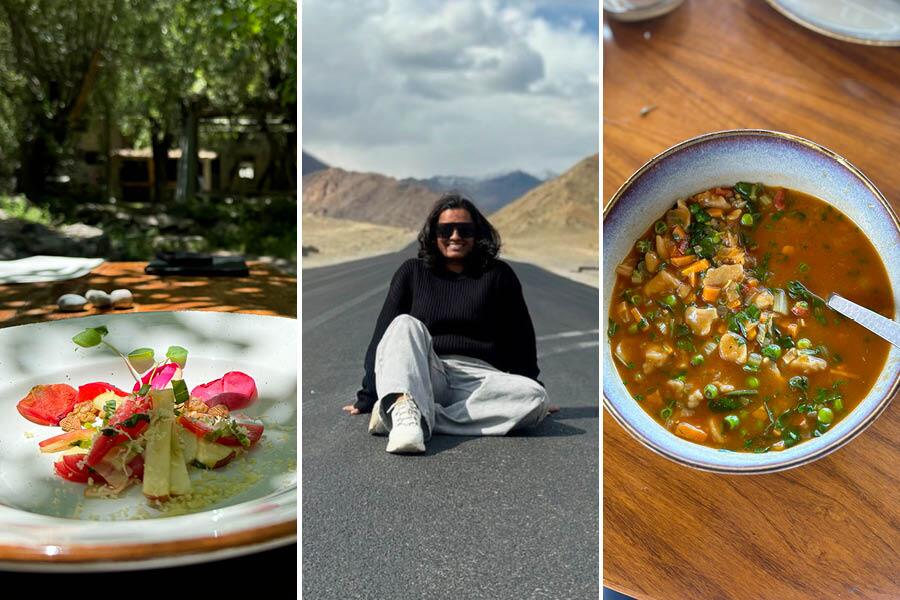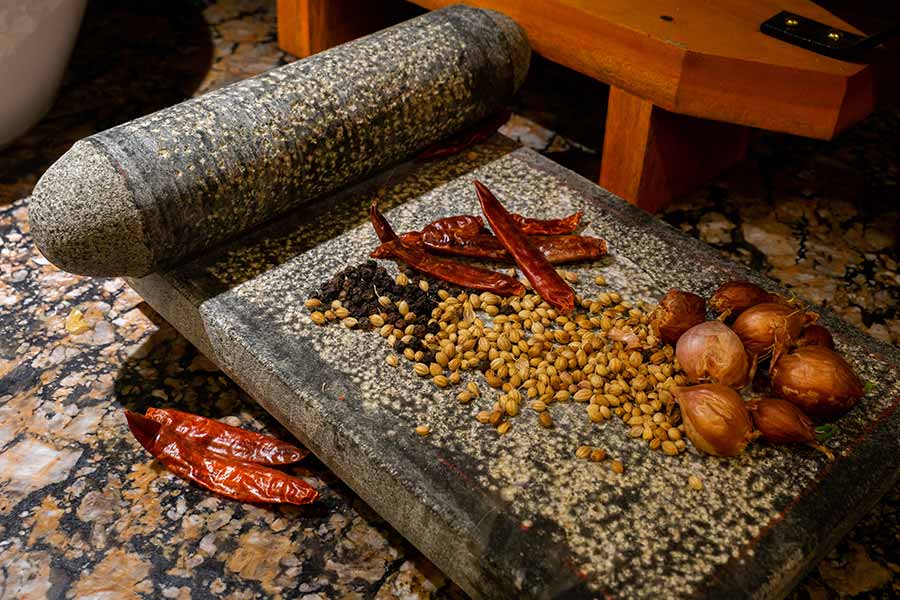Sienna Cafe sous chef Ankita Gupta Dujari was bitten by the travel bug very early in life. “My dad is a hardcore traveller and he’s taken us to almost every city and state in India,” said the chef when talking to My Kolkata about a recent trip to “dream destination” Ladakh. A self-proclaimed mountain lover — “no one can convince me otherwise,” she said — Ankita made a pact with her husband Kaushal when they got married that they would have one trip to the mountains every year. After years in the making, the sought after Ladakh trip finally happened for the couple in July this year, and it was all that she had hoped it would be, and more.
During the 14-day trip with family, the chef ticked off many boxes on the travel wishlist, including a three-day bike ride itinerary through the mountains and witnessing her first snowfall. “I’ve travelled across India, seen all the mountains but never had the chance to see snowfall. This time, I experienced my first ever snowfall at the highest motorable pass in Ladakh — Umling La. I cried at the sight and danced like a kid in Disneyland,” she said.
Of course, one of the highlights of the trip apart from the scenic beauty was the food. Ankita really wanted to experience Ladakhi cuisine and spent two weeks sampling all that the region had to offer.
Farm-to-table local samplings
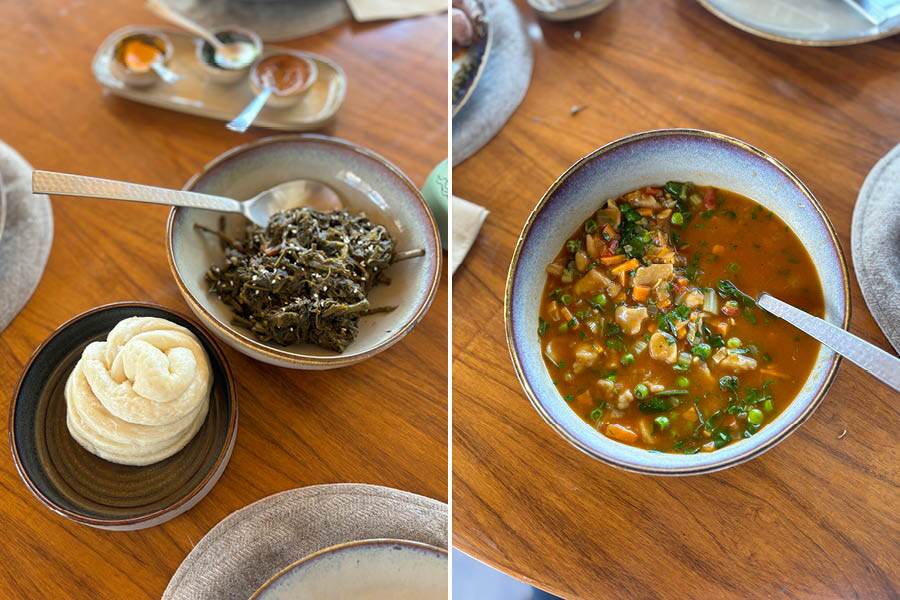
Kabra and Khambir, and (right) a bowl of Skyu at Namza
Eating her way through the local staples at Namza dining in on Zangsti road, in Leh, the chef discovered that the main food crop of Ladakh is barley, and it is often ground to make a flour known as tsampa, which is used in a variety of dishes. The barley also makes chhang — a beer-like fermented drink popular in the region, while apples and apricots feature in abundance in the markets.
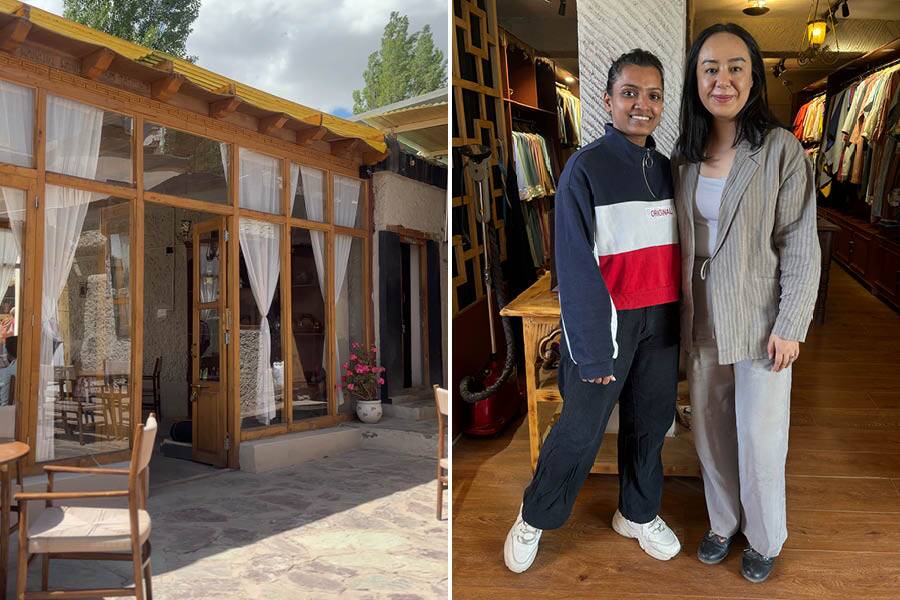
Chef Ankita with Padma Yangchan at Namza
Padma Yangchan and her partner Disket, started Namza dining with the idea of reviving lost Ladakhi recipes. As part of the trade routes connecting Tibet, Kashmir, Central Asia and Yarkhand, the region of Leh and Ladakh was a confluence of cultures and many of the dishes served at Namza can be traced back to the time of the ancient Silk Route.
What they ate: Zathuk, a soup with nettle leaves, wild garlic and dry cheese; a savoury appetiser of steamed dough with a walnut-apricot sauce called Drapu; Kabra, tangy and nutty foraged capers that was served with the flatbread Khambir; a hearty vegetable and meat soup with thumb-sized wheat dough balls called Skyu; Yarkhandi Pulao that was slow cooked for seven hours and served with a clear soup, mokmok (momo), chutney and pieces of mutton.
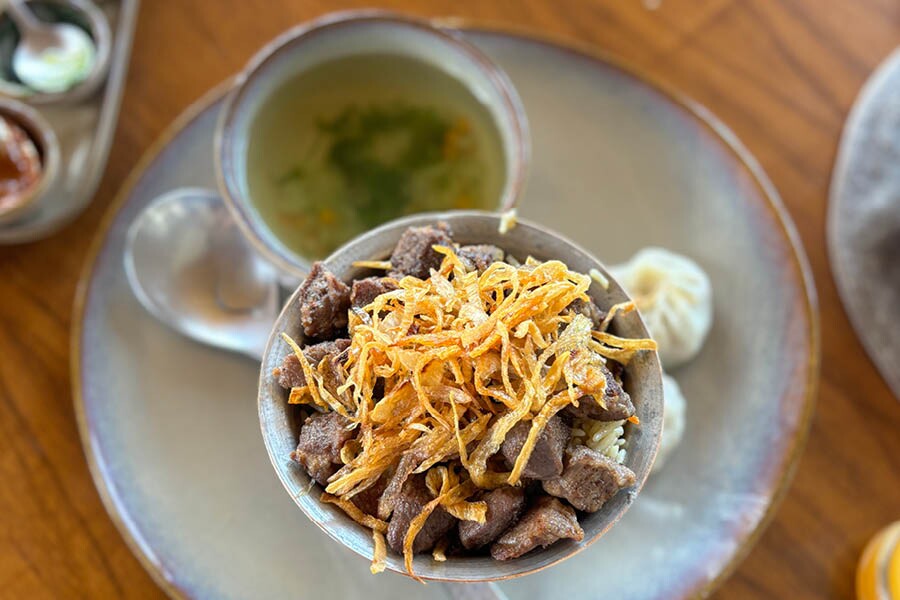
Yarkhandi pulao at Namza
The Yarkhandi pulao was one of the dishes that stood out for the chef. “Succulent mutton pieces, perfectly cooked aromatic rice with the right amount of spices — I cannot forget that plate! My parents and I loved it! This pulao is considered the ‘haute cuisine’ of Ladakh which travelled through the ancient Silk Route along with Yarkhandi traders who settled in Ladakh. And now it is one of the delicacies to try when in this region.”
From a monk’s kitchen
Chef Jagmeet Mingur was a monk for about 20 years before he followed his love for cooking to become a chef. “He started at Hemis Monastery, then lived at the Zhichen Bairo Ling Monastery in Nepal for several years before he went to a higher priest in Geshe la and then at the Diskit Monastery in Nubra Valley, he returned his vows and moved on to follow his heart,” said the chef. Mingur’s journey with food took him to Goa where he started as a dishwasher and then to Prana Cafe, until he was brought back to Ladakh by the owner of Stone Hedge, a boutique property in Nubra’s Hunder Village. The monk-turned-chef’s The Heritage Kitchen in Stone Hedge, serves hearty meals with a mission to preserve the local herbs and culinary heritage of Ladakh. “Chef Mingur says he has to preserve it for the next generation,” said Ankita.
What they ate: Ankita sampled their tasting menu which had Tangthur, a buckwheat cracker, with yoghurt spiced with skotse or dried wild garlic chives; a barley flour soup called Nyamtuk; momos with a filling of turnip leaves, spinach, spiced with wild jeera and chives and served with raw apricot chutney; Lettuce and Yak Cheese Salad with wild mint, dandelion leaves, labo or liquid churpi cheese; Polda and Samik which had barley flour kneaded with yoghurt and served with hag saag; a pulao called Soshik made without the use of any masalas except haldi, along with ghee and vegetables; a wild rose and wild goji berry tea called Shya that was a palate cleanser; A root vegetable version of Skyu; Phaymar, steamed barley dumpling with apricot jam and cream cheese; and on the side was some Chamomile and Sea Buckthorn Kombucha.
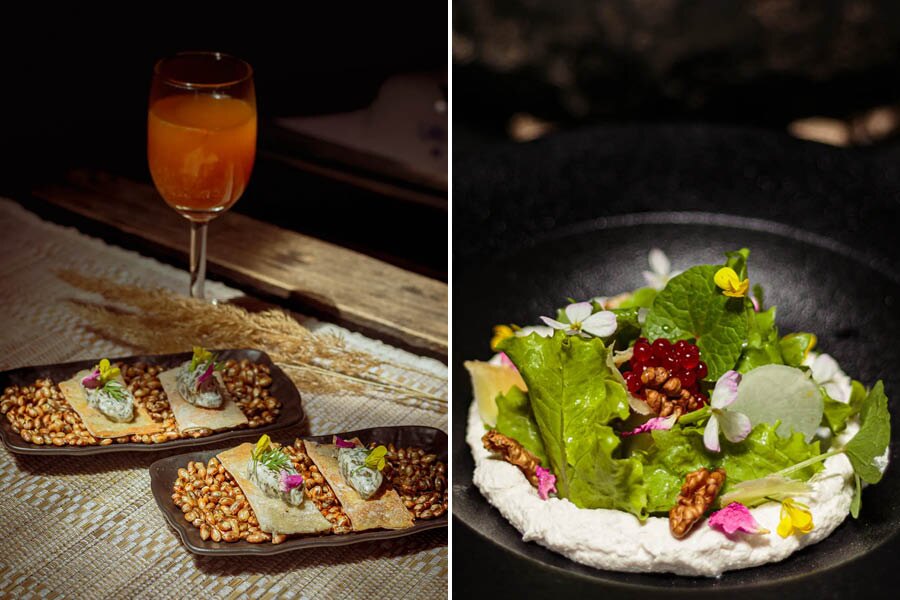
L-R: Tangthur, and Lettuce and Yak Cheese Salad at Heritage Kitchen
The standout dish here was the dessert Phaymar, which was steamed barley dough balls that were crumbled on apricot sauce and served with a side of cream cheese. “Unlike the flour-based sweets that we make like halwa, which are sugary and made with ghee, this had a unique texture and combined with the sweet-tart jammy sauce created an interesting flavour,” said Ankita.
Celebrating summer in Turtuk
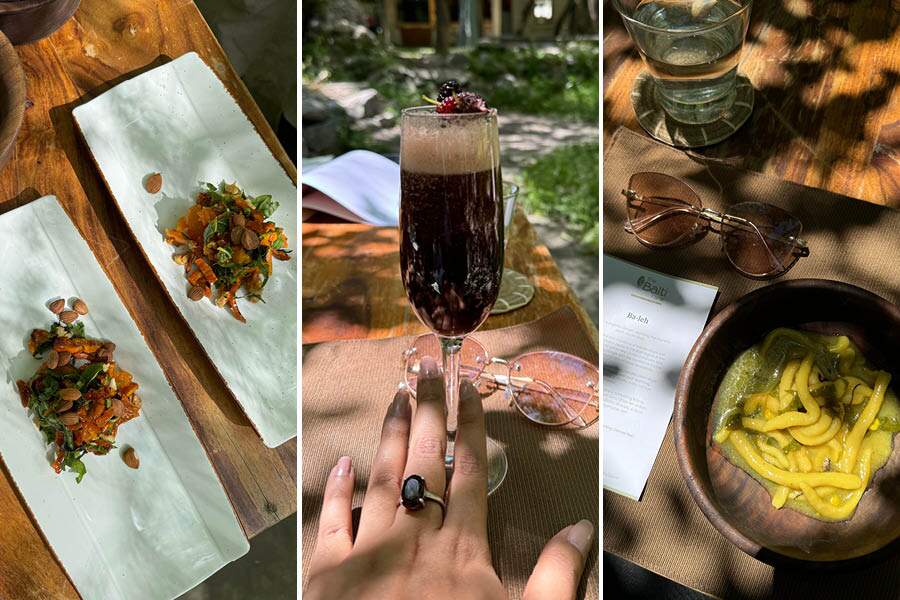
L-R: Phading, Oosaa, and Ba-leh at The Balti Farm
The Turtuk region of Ladakh has always been self-sufficient with a vast variety of food due to its agricultural community. “For the Balti community, summer is a celebration, thanks to their produce which is consumed in a nutritionally balanced cuisine with grains like buckwheat, cheese, fruits and vegetables,” said the Kolkata chef. The Balti Farm, started by Rashidullah Khan in 2020, aims to revive and preserve the culinary traditions and culture of Baltistan, which had become limited to local homes.
What they ate: The meal began with Chonmagramgrim, a crisp garden salad with apple chunks and yak cheese. This was followed by Ba-leh, a soulful soup with hand rolled noodles, chuffa or tiger nut and dry cottage cheese; two kinds of buckwheat pancakes — Moskot, which was served with a creamy walnut sauce, and Kisirnagrang-Thur, which were dipped in herby curd. There was also Praku, a thumb-pinched pasta in a walnut sauce; Phading, which were boiled and roasted apricots, apricot kernels flavoured with basil leaves and a side of Oosaa or mulberry juice.
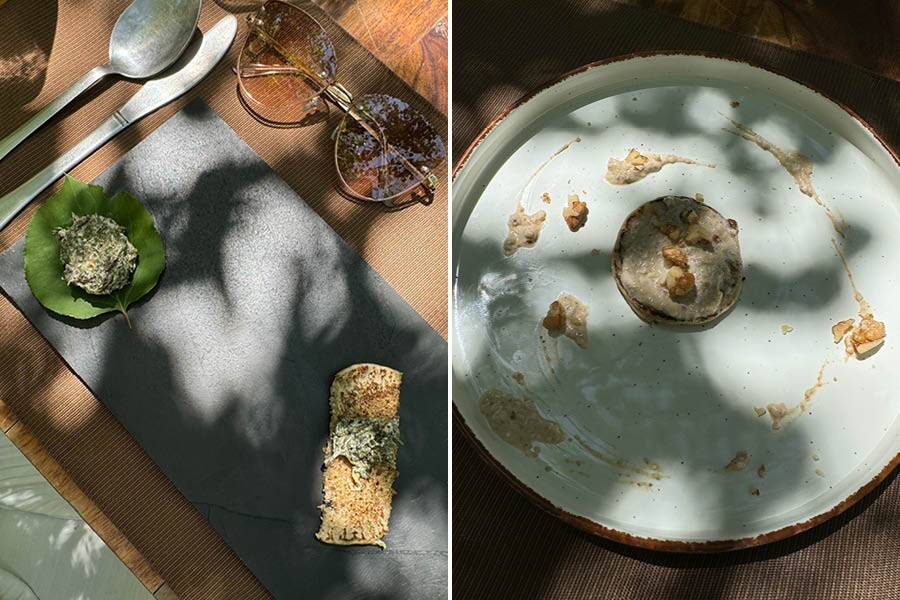
Buckwheat pancakes, Kisirnagrang-Thur and (right) Moskot at The Balti Farm
For pancake lover Ankita, the Moskot was her most favourite dish. “I enjoy eating pancakes, and make them often at home. But I have never made or tasted a walnut sauce before, and it has a nice nutty and caramel flavour which paired very well with the soft pancakes,” she said.
Little-known gem
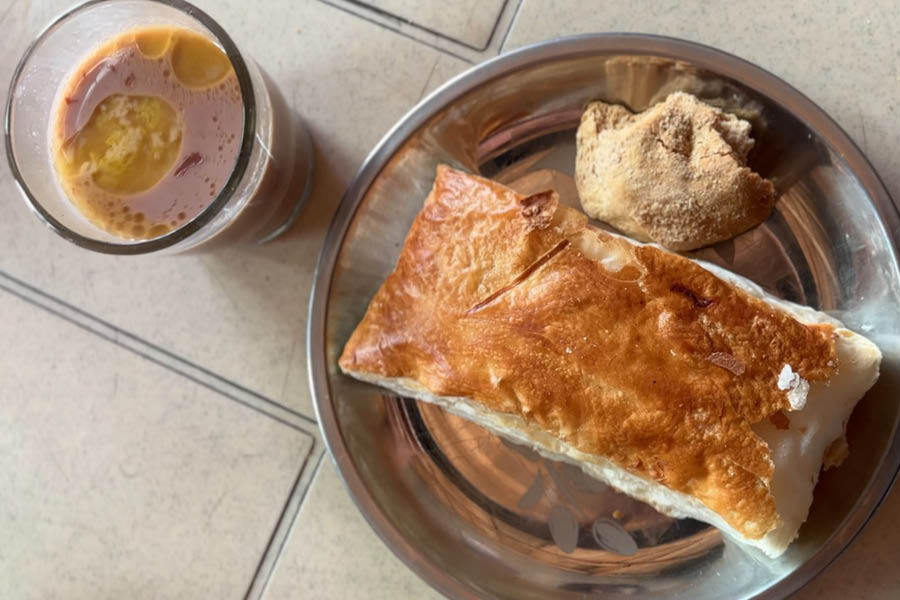
Salty and buttery ‘noon cha’ with local ‘khari’ and a locally made cookie known as Puli or Tagi Puli
The first taste of Ladakhi food has left the Kolkata chef impressed and she recommends everyone try the cuisine. “I just think everyone should at some point definitely try authentic Ladakhi food. Chef Jagmeet told me that Ladakhi food is more like Sattvic food, and has rich flavours but no heavy spices, which is why some people tend to not enjoy it. But I think, it’s a cuisine that’s very light on your stomach and if you are really into food you’ll understand the depth of this cuisine which is not much talked about,” said Ankita.
“From hearty stews, to succulent dumplings and mutton momos, and the aromatic Yarkhandi pulao, to a soulful bowl of skyu — every dish was interesting and outstanding,” she said. The variety of produce and the unfamiliar but rich flavour profile was something she “absolutely loved” and wants to experience again and explore more.
